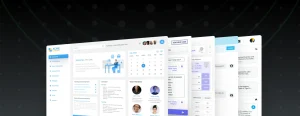The many smart, computer-like devices that are now commonplace — including watches, phones, appliances, thermostats, security cameras, and vehicles — are embedded with sensors that monitor changes in their environment or other conditions, and actuators that control them.
When these systems are well integrated, they transform businesses. Some examples include omni-channel sales, connected logistics for fleet management, and products-as-a-service business models.
Manufacturing
The Internet of Things is composed of physical devices with sensors that send data to a centralized platform. These data can then be analyzed to provide insights to business owners and personalization for customers. IoT can take a variety of forms, from smartwatches to injectable ID chips in animals and temperature sensors in jet engines.
The Industrial Internet of Things (IIoT) is transforming manufacturing by automating production procedures. This reduces human error and leads to more efficient production and fewer product defects. IIoT also monitors machines, which reduces maintenance costs.
IoT can track each item in a factory and its location on the supply chain. It can alert the system if any items are in short supply and automatically place orders for them. It can even make changes to the production process based on real-time data. This will enable manufacturers to create customized products quickly and efficiently. In turn, this will reduce the time to market and increase profit.
Retail
The Internet of Things involves sensor-loaded physical objects that communicate with each other to collect and exchange data. This data allows companies to improve product maintenance, design and features. It also helps to increase productivity and reduce downtime.
This data is collected through sensors that measure observable occurrences or changes in the environment, and actuators that trigger actions based on those signals. IoT devices connect to each other via wired (for example, Ethernet) or wireless (such as Wi-Fi, cellular) networks and are identified by their unique Internet Protocol (IP) address.
IoT technology can help businesses to track shipments and delivery status on their websites or mobile apps. For example, ParceLive uses IoT to provide real-time tracking of parcels. This technology is also enabling retailers to monitor store inventory in real-time and make more efficient stock decisions. This leads to better customer service and improved business outcomes. In addition, IoT can be used to improve worker safety in hazardous environments.
Healthcare
The IoT uses a variety of technologies, sensors, and network protocols to collect data and connect the physical world with the digital. This data is then managed and analyzed to extract actionable insights that can be used across industries.
For example, IoT devices in manufacturing can monitor machine downtime, automate processes, and reduce energy consumption. This reduces waste and increases productivity. It can also help businesses to identify opportunities to sell products as a service, which saves money on maintenance and operational costs.
For healthcare, IoT technology can help improve patient satisfaction by reducing wait times. IoT medical devices can track patient vital signs and alert doctors of any issues, enabling them to make diagnoses more quickly and efficiently. Additionally, IoT-enabled smart pills and wearables can help patients better manage their health and adherence to medication. This can lead to reduced hospital readmissions and improved overall care. Moreover, IoT-based systems can track and optimize the use of resources in a facility, such as the number of occupants in a conference room, to reduce operating expenses.
Transportation
IoT devices with sensors convert real-world information into data. Whether it’s a camera with motion detection, a car that gauges tire pressure or Amazon Alexa that plays songs on request, these devices provide raw, base data for their connectivity platforms. Examples include Wi-Fi, cellular IoT (2G, 3G, 4G and 5G), low-power wide area network (LoRaWAN) or wireless personal area network (6LoWPAN and ZigBee).
This data is transformed into useful insights that can be utilized across business processes. For example, UPS utilizes dynamic routing technology that optimizes delivery routes to reduce empty miles, saving 2-4 miles per driver on each route, resulting in substantial cost savings for the company. IoT can also help reduce maintenance costs by providing data that predicts equipment issues before they occur, allowing companies to minimize costly repairs and replacements. IoT also enables businesses to reduce waste by reducing machine downtime and automating processes, as well as cutting energy consumption through remote monitoring and control.






More Stories
Beyond Google: Your Guide to Privacy-Focused Search and Anonymous Browsing
Internet Privacy Tools Beyond Mainstream VPNs and Browsers
The Role of Blockchain in Modern Web Authentication